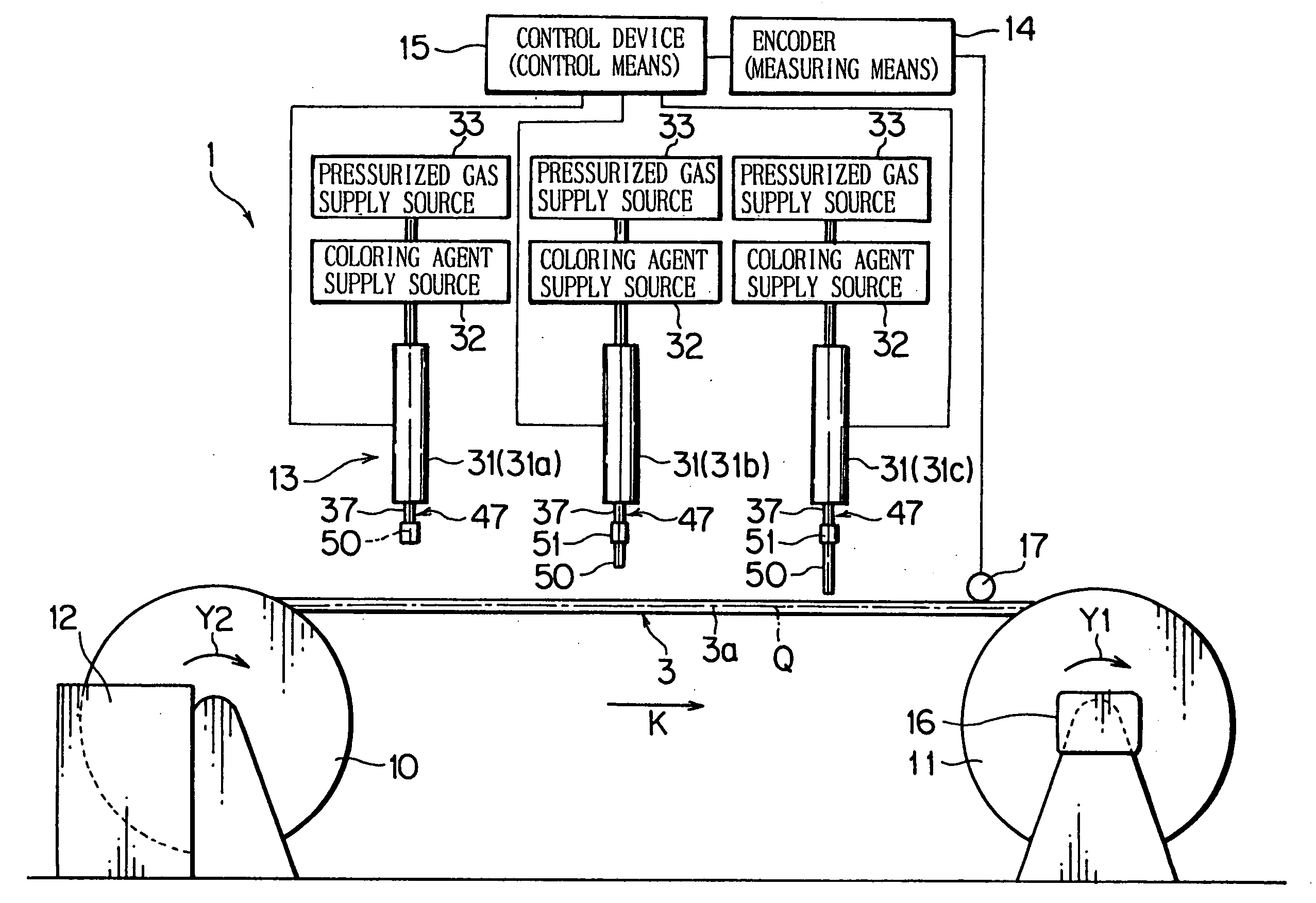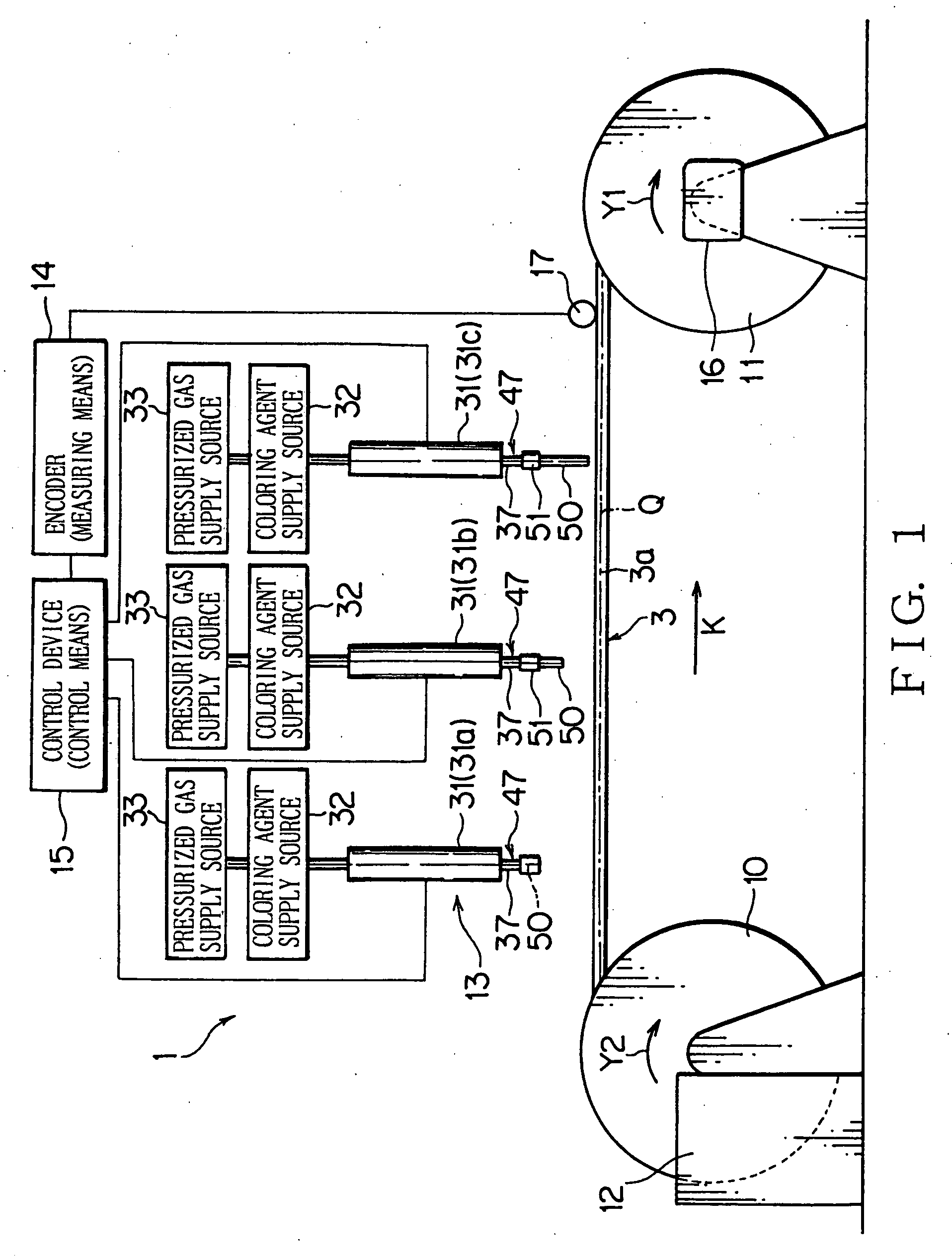Apparatus and method for coloring electric wire
a technology of electric wire and apparatus, which is applied in the manufacture of cables/conductors, coatings, basic electric elements, etc., can solve the problems of increasing the time period and labor hours required for the production of wires, deteriorating the yield of wire materials, and deteriorating the productivity of wires, so as to achieve a simple method of coloring. , the effect of simple structur
- Summary
- Abstract
- Description
- Claims
- Application Information
AI Technical Summary
Benefits of technology
Problems solved by technology
Method used
Image
Examples
Embodiment Construction
[0057] In the following, an apparatus 1 for coloring an electric wire (i.e. coloring apparatus 1) according to a first preferred embodiment of the present invention will be explained with reference to. FIGS. 1-6. The coloring apparatus 1 shown in FIG. 1 and so on is an apparatus for forming a mark 6 on a part of an outer surface 3a of an electric wire 3 (i.e. wire 3). That is, the coloring apparatus 1 colors the outer surface 3a of the wire 3, i.e. performs marking on the outer surface 3a of the wire 3.
[0058] An electric wire 3 constitutes a wiring harness to be mounted on a motor vehicle or the like as a mobile unit. As shown in FIG. 6A and so on, the wire 3 includes an electrically conductive core wire 4 and an electrically insulating coating 5. A plurality of element wires are bundled up to form the core wire 4. Each element wire of the core wire 4 is made of electrically conductive metal. The core wire 4 may be constituted by a single element wire. The coating 5 is made of synt...
PUM
 Login to View More
Login to View More Abstract
Description
Claims
Application Information
 Login to View More
Login to View More - R&D
- Intellectual Property
- Life Sciences
- Materials
- Tech Scout
- Unparalleled Data Quality
- Higher Quality Content
- 60% Fewer Hallucinations
Browse by: Latest US Patents, China's latest patents, Technical Efficacy Thesaurus, Application Domain, Technology Topic, Popular Technical Reports.
© 2025 PatSnap. All rights reserved.Legal|Privacy policy|Modern Slavery Act Transparency Statement|Sitemap|About US| Contact US: help@patsnap.com



